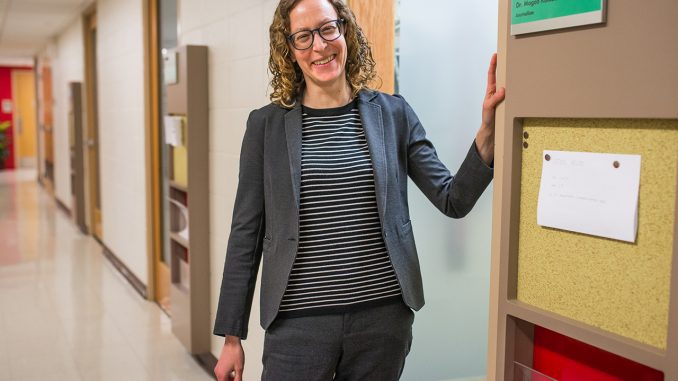
While working as a reporter at the Guelph Mercury during the height of its financial challenges, Magda Konieczna remembered the story of a fellow Ontario, Canada paper.
After a group of eight bar-goers complained about their local newspaper in 1999, each chipped in $100 to start the Port Hope Town Crier, which ran for about 15 months before its founders stopped subsidizing it.
“They had literally no business model,” said Konieczna, a Temple University journalism professor. “Knowing about that, and seeing the Mercury in trouble, I became aware that there were other ways to fund journalism besides advertising money.”
Konieczna’s interest in financing journalism inspired her 2018 book “Journalism Without Profit: Making News When the Market Fails.” The book serves as an in-depth study of nonprofit journalism and examines the funding and influence of nonprofit news organizations. Konieczna gives talks on her book around the country and teaches some of its ideas in her Temple course, The Entrepreneurial Journalist.
Nonprofit newsrooms that focus on public-service journalism are typically funded by grants and public support, while for-profit newsrooms are funded by advertisements and paid subscriptions, Konieczna said. The growing financial struggles in public-service journalism partially come from changing business models.
Previously, advertisement revenue funded a newspaper’s operations. But the emergence of digital platforms prompted news outlets to adopt for-profit models that strayed from advertisement-focused models.
As the Internet gained popularity, many newsrooms experienced financial turmoil. From 2008-17 newsroom employment plummeted 23 percent and more than one-third of the United States’s largest newspapers had layoffs between January 2017 and April 2018, according to the Pew Research Center. In response, nonprofits like The Lenfest Institute for Journalism have emerged to help local news outlets implement sustainable business models.
“The funding model where people are buying the newspaper or watching the newscast for a whole bunch of different reasons that include seeing the football score and doing the crossword and reading about Beyoncé, that model is like forms of subsidy for doing public-service journalism,” she said.
Evolving digital platforms, like The New York Times’s crossword puzzle app, divide funding for different types of journalism, Konieczna said, and often removes funding for public-service journalism.
The book stemmed from Konieczna’s dissertation study while earning her Ph.D. from 2009-14 at the University of Wisconsin-Madison, after leaving the Guelph Mercury in 2009.
Konieczna observed three local and national nonprofit news organizations for the study, including MinnPost, the Center for Public Integrity and the Wisconsin Center for Investigative Journalism, which is housed at the University of Wisconsin-Madison.
Andy Hall, the executive director and co-founder of the Wisconsin Center for Investigative Journalism, decided to make the center’s content available for free to other news organizations when it opened in 2009. Hall thought the center’s content would reach people more easily that way.
“Journalism is facing a series of profound problems,” Hall said. “How to generate reliable revenue is among the most urgent and among the issues that are worsening at the fastest rate.”
The Wisconsin Center’s investigations are funded by grants from foundations like the Ethics and Excellence in Journalism Foundation. By providing the investigations to news organizations for free, it’s fixing journalism, Konieczna said.
“These guys are not trying to blow up journalism,” she added. “They’re trying to fix it from inside by elevating the quality of journalism that exists.”
Meredith Siegler, a junior journalism major, is interested in learning more about nonprofit journalism because of its potential to be less biased and focus more on truth-telling compared to larger, for-profit newspapers with sponsors, she said.
“It’s important to have people more aware of different forms of journalism,” Siegler added. “For me, going into the field, it’s important to learn about it because of different job opportunities.”
Konieczna hopes her book spreads awareness about nonprofit newsrooms among both professional journalists and journalism students.
“It’s hard to tell exactly what’s happening with journalism, but these news nonprofits are able to earn revenue directly from producing the kind of journalism that’s important for democracy,” she said. “They’re an important player in trying to continue to do that important journalistic work.”



Be the first to comment